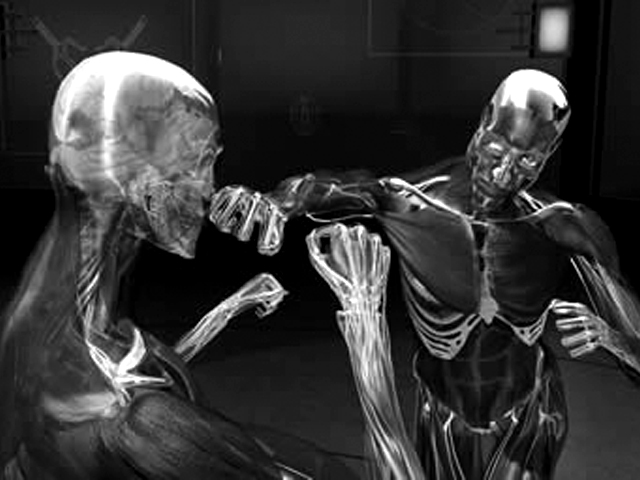Have you ever wondered about the force behind a champion boxer’s knockout punch? Ever been intrigued by the sheer power that sends opponents sprawling helplessly on the canvas? Today, we delve into the secrets behind boxing’s most potent strikes, uncovering the science that underpins every champion’s crushing blow.
Boxing, often referred to as the “Sweet Science,” is a complex blend of technique, strength, precision, and power. The power behind each punch doesn’t just emanate from the arms; it is the result of an intricate combination of factors, all working in perfect harmony. From the strategic rotation of the hips to the ballistic movement of the fists, each element contributes to the potency of a punch.
In this deep dive, we will explore the role of biomechanics, training techniques, and even genetics in a boxer’s punch power. Prepare to gain a new appreciation for the sport as we unravel the science of boxing, illustrating how champions transform their bodies into potent weapons of precision. Let’s step into the ring and dissect the dynamics of a knockout punch! 🥊💥
The Mechanics of a Powerful Punch
In boxing, the power behind a punch isn’t merely about brute strength. It’s a delicate blend of physical and psychological factors that, when combined, can produce a truly devastating blow. Let’s delve into the science that goes into a knockout punch.

Physics and Force
The science of boxing punch power begins with a principle from physics: force equals mass times acceleration (F=ma). In boxing terms, this means the power of a punch is determined by both the weight behind it and the speed at which it’s delivered. Hence, a heavier boxer isn’t necessarily going to hit harder if their punch isn’t delivered swiftly.
The Role of Kinetic Energy
Kinetic energy plays a crucial role in delivering powerful punches. It’s the energy that an object possesses due to its motion. A boxer’s kinetic energy is initially stored in the muscles and then transferred through the body to the fist. The more effectively a boxer can channel this energy into their punch, the more powerful it will be.
Transfer of Energy
The technique is paramount in the effective transfer of this energy. The force of a punch begins at the boxer’s feet, travels up through the legs and hips, into the core, then out through the shoulder and arm, and finally into the opponent via the fist. If any part of this kinetic chain is weak or out of sync, the power of the punch can be significantly diminished.
Techniques for Maximizing Punch Power
There are various techniques that boxers use to maximize their punch power. Here are a few:
- Rotation: By rotating their body as they punch, boxers can add extra power. This rotation begins at the feet and ripples upwards.
- Alignment: Proper alignment of the fist, wrist, and forearm is critical to ensure the punch lands with maximum force and reduces the risk of injury.
- Punch through the target: Instead of aiming for the surface of the opponent, boxers are trained to punch ‘through’ the target, increasing the force of impact.
Psychological Factors
While physical factors are essential, psychological factors can also significantly influence the power of a punch. Confidence, determination, and the ability to read an opponent and time a punch perfectly can all contribute to delivering a knockout blow.

Fight or Flight Response
In stressful situations, the body’s ‘fight or flight’ response can be triggered, releasing adrenaline into the system. This can provide a temporary boost in strength and speed, potentially increasing the power of a punch. However, it also uses up energy rapidly, so managing this response effectively is critical for sustained performance in the ring.
In conclusion, the science behind a powerful punch in boxing is multifaceted, involving physical and psychological elements. By understanding and harnessing these factors, boxers can significantly enhance their knockout power.
Conclusion
In summary, the potency of a knockout punch in boxing is not merely a function of brute strength but a sophisticated blend of physical and psychological components. The sheer power of a punch is underpinned by key principles of physics and biomechanics, where force equals mass times acceleration. This implies that both the weight behind a punch and its delivery speed are crucial.
Kinetic energy, stored in the muscles and transferred through the body into the fist, also plays a pivotal role in this process. The efficient transfer of this energy, which originates from the feet and flows through the kinetic chain to the opponent, is what truly makes a punch devastating. However, if any part of this kinetic chain is weak or out of alignment, the punch’s effectiveness can be substantially reduced.
Boxers also employ certain techniques to optimize their punch power, such as body rotation, proper alignment of the fist, wrist, and forearm, and punching ‘through’ the target. These tactics not only augment the impact force but also minimize the risk of injuries.
Lastly, psychological factors like confidence, determination, and accurate timing based on reading an opponent’s movements are instrumental in delivering that knockout punch. The body’s ‘fight or flight’ response, triggered in high-stress situations, can provide a temporary boost in strength and speed, further amplifying a punch’s power. However, managing this response is critical to ensure sustained performance in the ring.
Hence, understanding and leveraging these physical and psychological elements can dramatically enhance a boxer’s knockout potential, revealing the profound science behind the power of a punch in boxing. 🥊🧠⚡️
